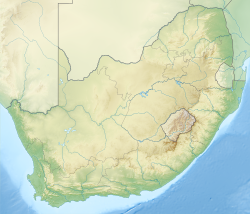| Tamboti River | |
|---|---|
| Location | |
| Country | South Africa |
| Region | Limpopo |
| Physical characteristics | |
| Mouth | Limpopo River |
• coordinates | 23°13′51″S27°43′12″E / 23.230725°S 27.720097°E |
The Tamboti River is a river in the Limpopo Province of South Africa. It is a right hand tributary of the long Limpopo River. [1]
